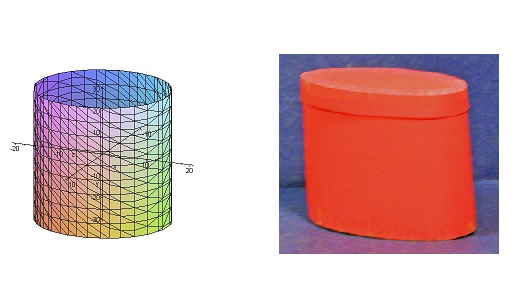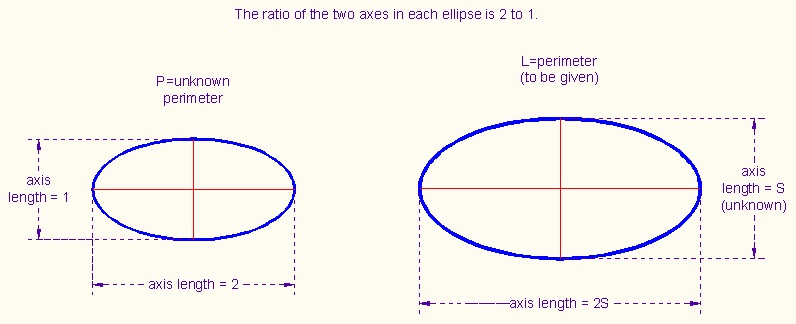


| \X1T=Acos(T) | |||||||||
| \Y1T=Bsin(T) |
| 1→A:.5→B | ENTER | A and B are half-axes of the left ellipse above; | ||||||
| fnInt(√(nDeriv( | ||||||||
| X1T,T,T)2+nDeriv( | ||||||||
| Y1T,T,T)2),T,0,2 | ||||||||
| π) | ENTER | |||||||
| Ans→P | ENTER |
| P = 4.8442223304 (before rounding). This is the perimeter of the ellipse with axes 1 and 2. |
| L/P→S | |||||||||
| S/2→B | ENTER | 1/2 of the shorter axis of the ellipse we will draw; | |||||||
| 2B→A | ENTER | 1/2 of the longer axis; | |||||||
| WABπ→V | ENTER | Volume of the cylinder=area of base*height (The area of an | |||||||
| ellipse with half axes A and B is πAB. Compare to the area of | |||||||||
| a circle, π*r*r.) |
| seq(T,T,0,90,5)→L1 | (seq is under LIST OPS 5) |
X1T(L1)→X |
Y1T(L1)→Y |
| \X1T=Acos(T) |
| \Y1T=Bsin(T) |